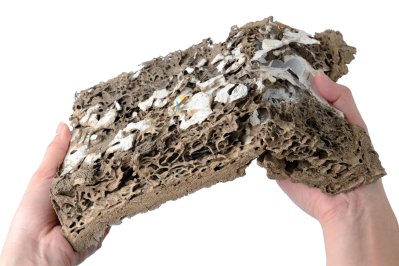Termites & How They Can Impact Your Commercial Business

When you think about termite infestations, you may not think much about your commercial business. After all, it is in a high-traffic public area with a parking lot and not much grass or vegetation around, so you might assume your building is safe from infestation. However, this is not always the case, due to the different species of termites. Your business is at just as much at risk of termites as your home.
Subterranean Termites
This species lives underground and builds an extensive network of tunnels in the ground. For business owners, they need to be aware of potential risks around their business. Any areas on your property where you have shrubs, trees, flowers, or other vegetation planted that provides direct access to the ground can allow termites to easily come to the surface to seek sources of damp, decaying, and rotting wood, as well as dry wood.
Furthermore, they can burrow under pavement, sidewalks, and the foundation of your building to gain access to wood. Since they are so small, they can easily fit through very minute cracks, gaps, and openings in concrete and asphalt.
Once they gain access to your building, they will slowly eat away at it until it is too late. By the time you notice an infestation, the termites could have already caused extensive damage to your business.

Drywood Termites
This species does not have to live underground. Rather, they build their colonies within dry wood structures. They can also be a bit more destructive than subterranean species because they will eat all of the wood, including hard knots, to build tunnels and establish their colonies.
All that this species needs, to start infesting your business, are any direct access points to dry wood, such as gaps, cracks, or other unsealed exterior sections anywhere on the building, including:
Doors
Windows
Siding
Overhangs
Gutters
Downspouts
Roof Vents
Six Common Signs of Termites
There are several indications of potential infestations in and around your business. Spotting these sooner can make a big difference in repair costs and the extent of damages they cause. Typical signs include:
Mud tubes on the side of buildings or other structures. The mud tubes are sometimes mistaken for wasp nests and can look rather similar. The key difference is they will extend all the way to the ground and be one long, continuous piece and indicate subterranean termite infestations.
Discovering small sawdust-like dust particles along the edges of walls. As termites eat wood, they digest it. The sawdust-like dust is waste left by the termites. It may also look like a fine powder.

Finding discarded wings in or around your business in the spring and early summer. This time of year is referred to as a swarming season. It is when mature termites grow wings and fly away from their current colony to establish a new one. Once a termite finds a suitable mate, it discards its wings. The wings are very small, but there can be as many as hundreds of discarded wings, all in a relatively small area if the existing colony is rather large.
The paint on the exterior or interior walls is “bubbling.” As the wood is eaten, it can cause the paint to bubble and easily peel. Aside from eating wood, drywall is another favorite food for these pests, so you may also notice peeling paint in areas where drywall covers the walls.
You notice there are “soft” spots on the walls. These “soft” spots are caused by the tunnels the termites make through the drywall or wood. If you lightly press on the walls and notice areas where the wood sinks inward when pressed on, chances are, you have a termite infestation.
Small burrowed-out holes in books and other paper-based materials. Since paper is made from wood, it can be a source of food for termites. They are not discriminating when it comes to food.

Impacts Infestations Have on Your Business
Aside from the thousands of dollars or more in damages that termite infestations can cause to your building, they can have other impacts on your business. One major impact is the risks that you could lose both existing customers and potential new customers.
If customers see any type of “pest” activity caused by termites, they can be put off from returning to your business in the future. It makes them question the level of cleanliness and upkeep the business receives.
Furthermore, in today’s social media-driven society, you can bet they are going to tweet and post their findings online, where their friends and others will see their posts. This could prevent new customers from even setting foot inside your business.
Another major impact a termite infestation could have is how your business’s reputation could be hurt. If the local newspaper or news station gets word of the problem, your infestation could be the topic of a news article, giving your business negative publicity, which could damage your reputation in the community.
Both of these impacts have a direct influence on your earning potential and revenues. Getting back into the good graces of your customers and community can take time—time which you may not have and, ultimately, it could result in you going out of business.

Not to mention, any repairs you need to make and their associated costs have to come out of your earnings. Most general liability and business insurance policies do not cover structural damages caused by termites. Plus, even if you have coverage to help cover lost income and wages, the fine print in your policy could have a clause that states claims will not be paid for termite infestations.
As you can see, these little wood-eating pests can become a major nightmare for business owners. If you don’t want your business to become an “all-you-can-eat buffet” for termites, you need to take preventative measures.
Tips to Keep Your Business Termite-Free
The best place to start is with a termite inspection of your business by a qualified termite service technician. Inspections help identify potential risks to your business, their sources, and recommendations by your technician about what to do next.
Aside from annual or bi-annual inspections, you will want to have your building and property treated for termites. There are both effective indoor and outdoor treatments which can create a barrier to stop colonies from developing in and near your business.
Treatment plans are developed based upon the presence of termites in the immediate area. If you already have an infestation on your property or your building, then you need to get it addressed right away.
Once the infestation has been dealt with, then you need to continue with ongoing and regular termite maintenance care to prevent re-infestations. Additionally, as you make repairs to your business, make sure to have wood and drywall professionally treated, as not all building materials are pre-treated for termites.

Even if you are not sure whether you could have termites, but you have noticed potential signs, it is always in your best interest to get an inspection done. The biggest mistake you can make is ignoring the warning signs, as the longer, you wait the more damage is being done to your commercial building.
For information about termites and prevention tips, or to schedule an inspection for your business, please feel free to contact MightyMite Termite Services at 408-377-3761 today! We proudly serve the San Jose and entire Bay Area in Northern California. While you are scheduling an inspection for your business, don’t forget to also schedule one for your home!
